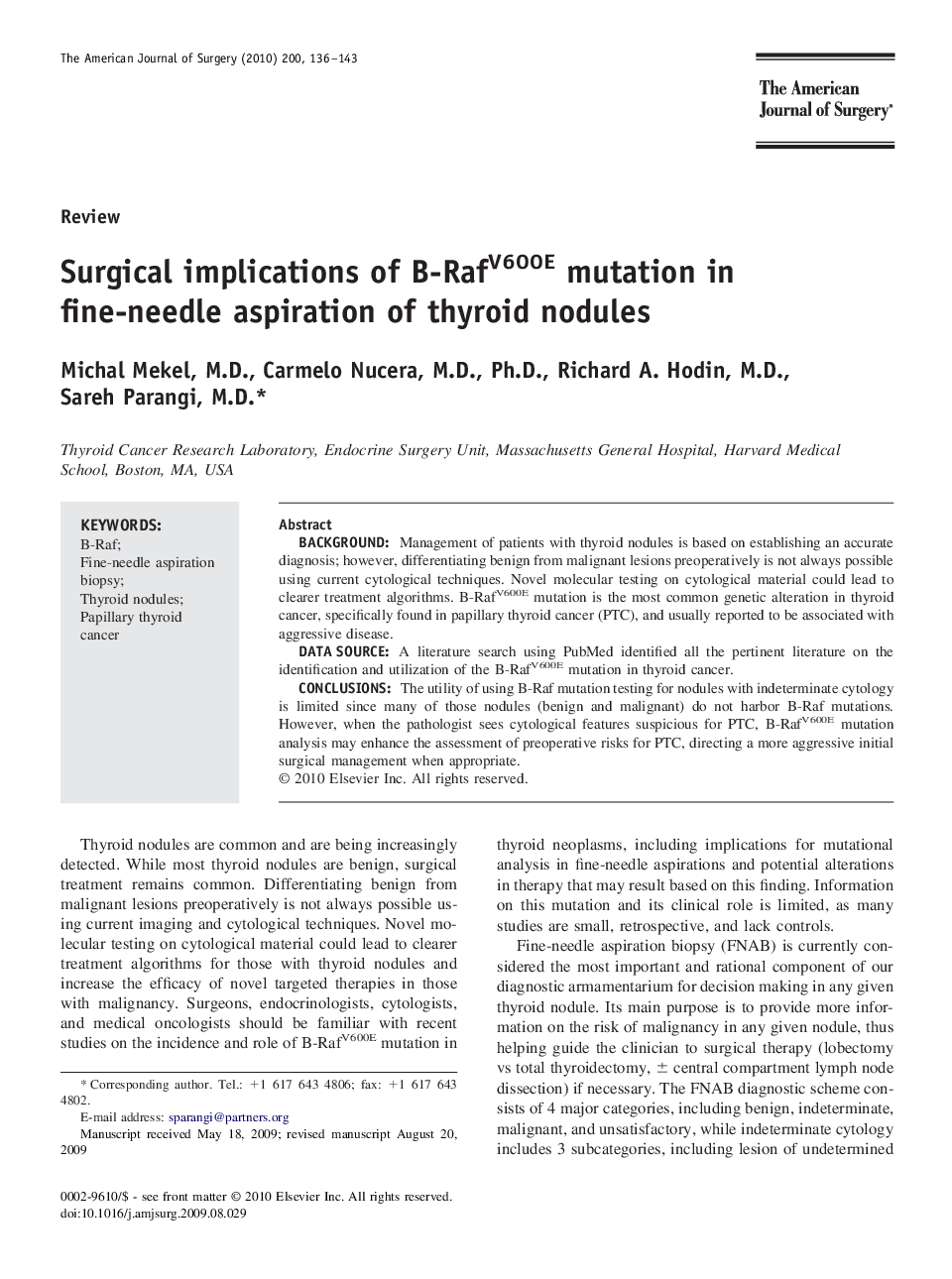| Article ID | Journal | Published Year | Pages | File Type |
|---|---|---|---|---|
| 4280372 | The American Journal of Surgery | 2010 | 8 Pages |
BackgroundManagement of patients with thyroid nodules is based on establishing an accurate diagnosis; however, differentiating benign from malignant lesions preoperatively is not always possible using current cytological techniques. Novel molecular testing on cytological material could lead to clearer treatment algorithms. B-RafV600E mutation is the most common genetic alteration in thyroid cancer, specifically found in papillary thyroid cancer (PTC), and usually reported to be associated with aggressive disease.Data sourceA literature search using PubMed identified all the pertinent literature on the identification and utilization of the B-RafV600E mutation in thyroid cancer.ConclusionsThe utility of using B-Raf mutation testing for nodules with indeterminate cytology is limited since many of those nodules (benign and malignant) do not harbor B-Raf mutations. However, when the pathologist sees cytological features suspicious for PTC, B-RafV600E mutation analysis may enhance the assessment of preoperative risks for PTC, directing a more aggressive initial surgical management when appropriate.
